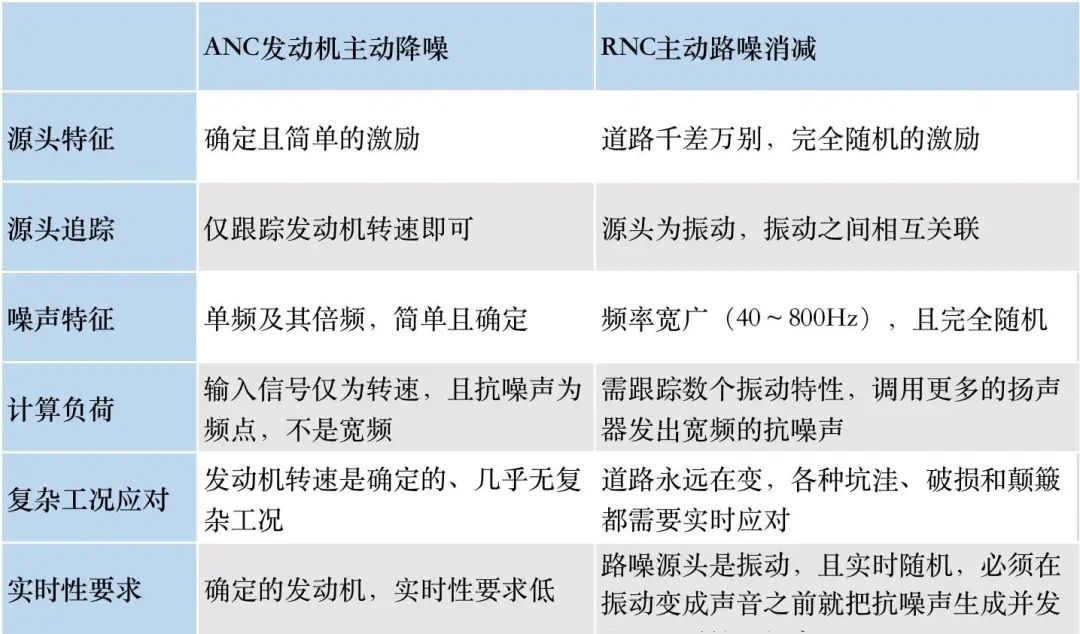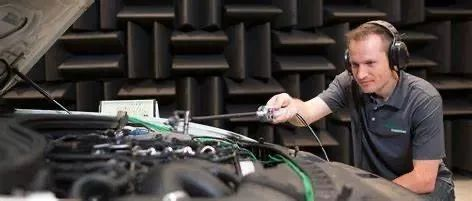Article by | Zheng Wen
Edited by | Zhou Changxian
NVH Performance: a Comprehensive Quality Issue for Automobile Manufacture
The old topic has encountered a new script.
NVH performance is a comprehensive quality issue that measures the quality of automobile manufacture and is a traditional skill of automakers.
To put it simply, the key to the “quality feel” of a car is the NVH level. Statistics show that one-third of vehicle failures are related to NVH problems, and nearly 20% of R&D costs of major automakers are spent on solving NVH problems.
NVH refers to Noise, Vibration, and Harshness, which occur simultaneously and are indistinguishable in the mechanical vibration of automobiles, so they are often studied together.
People’s impression of electric cars is that there is no roaring sound after removing the engine system. Does this mean that the noise reduction work has come to an end?
According to a research result released by Autohome in collaboration with Ke Rui Sai Chi Consulting, consumers’ complaints about basic performance issues such as NVH are second only to issues related to range. They are even more significant than complaints about driving assistance functions. The main feedback on faults is various noises, such as wind noise, tire noise, abnormal noise, and air conditioning noise.
At an automotive technology conference in Detroit, NVH engineering experts believe that electric cars have changed the way noise reduction works. Greatly reducing NVH related to the transmission system will greatly increase the perception of other NVH sources by people inside the car.
Jian PAN, Senior Director of Engineering at Auria Solutions, said, “Electric cars will make occupants of the car hear new, unfamiliar noise frequencies, and some of these noise frequencies may be particularly unpleasant.”
An engineer involved in hybrid project NVH said the biggest challenge was the noise of oil and liquid sloshing in the fuel tank in pure electric mode. Different liquid levels also have different noises. He lamented that without the engine, other sounds became clearer and were “amplified” in people’s perception.
This is also the reason why NVH engineers haven’t become more relaxed with the rise of electric cars but rather have had a straight rise in blood pressure.
A Mysterious Art
The importance of NVH cannot be overstated.
Sound is formed by the vibration of objects. Vibration frequencies that can be “heard” range from 20 to 20kHz. Subjective evaluation criteria can classify all unpleasant sounds as noise, which varies from person to person. Sometimes, high-frequency sounds can be unpleasant even at low decibels.Generally speaking, the sound level of a normal environment is smaller than or equal to 60db, the sound level of a noisy environment is smaller than or equal to 70db, and a sound level greater than or equal to 80db is considered a noisy environment. If a person is exposed to an environment with a sound level of 60db to 70db for a long time, their hearing may be damaged. If the person is exposed to an environment with a sound level above 70db for a long time, not only their auditory system will be affected, but they may also experience irritability and high blood pressure.
A vehicle traveling at high speed without NVH control is an unbearable noise box.
This field is called “magic” by engineers due to the involvement of numerous related components, complex parameters and working conditions, inaccurate results from modal analysis and CAE analysis, discrepancies between bench test results and road test results, and a lack of clear guidance. Many good test results are often attributed to “luck.”
Theoretically, there are three elements that need to be controlled in NVH: source, path and audience (people). The smaller the source stimulation and the better the structural path control, the better the control effect.
The principle is simple, but the system is complex. Tens of thousands of components in a car can become noise sources, resulting in many examples.
The operating conditions of the vehicle are complicated and varied, including the arrangement of various systems such as the vehicle powertrain model, road model, driver model, traffic flow interference model, and load model. Additionally, the vibration between the systems is interrelated.
Even after using a car for a period of time, the wear and tear of components such as the gears in the transmission system, universal joint, rubber bushings in the suspension system, and brake discs in the brake system can have a significant impact on the NVH characteristics of the entire vehicle.
The complexity of this problem lies in the fact that it is a nonlinear problem. The description, definition and resolution of the problem are all complex.
The mechanism of noise and vibration formed by the ‘clicking’ sound, ‘rumbling’ sound, and ‘squeaking’ sound that drivers and passengers can feel is likely to be formed by multiple hierarchical and interlocking factors, which need to be decomposed and tested layer by layer in order to find the cause.
For example, from the position of the driver, they can hear noise from various sources, such as the low-frequency noise of the vehicle’s internal cavity mode and the vehicle body’s local mode avoidance frequency, the vibration isolation performance of the suspension bushing, the vibration isolation performance of the tires, and the local stiffness of the vehicle body. The mid-frequency ‘rumbling’ sound is affected by the vibration isolation performance of the tires and suspension bushings, the dynamic stiffness of the vehicle body’s attachment point, the vibration transmission characteristics of the vehicle body’s sound and vibration, and the sound insulation performance of the vehicle body. The high-frequency noise is affected by tire radiation noise and the sound insulation performance of the vehicle body.To explain, last year’s Nobel Prize winners in physics won the award for their “groundbreaking contributions to the understanding of complex physical systems.” This means that numerous factors from different levels have an extremely nonlinear linkage effect that requires finding order from a chaotic and complex system. Once research findings are obtained, they are worthy of the Nobel Prize.
This kind of complex system is poetically referred to as “a butterfly fluttering its wings in the Amazon rainforest in South America causing a hurricane in Texas two weeks later.”
NVH control is a good example of complex system control.
A New Attempt
The usual research method is to simplify the model.
The noise of traditional automobiles mainly includes engine noise, road noise, and air noise. Wind noise, which is an external factor, cannot be changed (part of the body vibration can reduce the noise), but engine noise and road noise are structural noise and can be improved. Analyzing and improving the vibration and noise transmission characteristics of the structure can significantly reduce vibration and noise.
This is also the key to achieving good NVH.
The Avita NVH team proposed the dedicated application of active noise reduction technology to road noise, with its source being the “vibration of the tire and road contact.” RNC (Road Noise Control) active noise reduction focuses on collecting the vibrations that cause road noise through vibration sensors arranged on the chassis, and collecting real-time road noise inside the car through error microphones arranged in the car in order to set and achieve noise reduction goals.
In the past, the research on the isolation of the powertrain suspension system and the exhaust noise of the engine were important contents to improve the comfort of the entire vehicle. The application of active noise reduction technology (ANC) on engines/turbos is mature.
The basic principle of an ANC engine’s active noise reduction is to monitor the regular working mode of the engine and, based on the noise signal received by the error microphone and the engine speed signal, send out a sound signal with equal amplitude and opposite phase.

The active road noise reduction technology, like ANC, uses “destructive interference of sound waves,” namely, the superposition of reverse noise to cancel out noise. However, RNC noise reduction is a hundred times harder than ANC. The source of the excitation characteristic of ANC technology is regular and predictable, which is significantly less difficult than RNC, and the difficulty of active noise reduction in boosters is even lower.
Dr. Kong Xiangjie, the technical director responsible for the Avita 11’s self-developed RNC algorithm, summarized the specific difficulties as follows:
Complete Randomness
-
Responding in real time to bumpy, damaged, or speed-bumped roads is the key to RNC’s mass production success.* The frequency range of road noise is wide, generally covering at least 40-500Hz. For 100Hz noise, the error range of RNC noise reduction is 0.85m, which is not a problem. However, for 400Hz noise, the error range of RNC noise reduction is only 0.2125m.
-
The real-time generation of RNC noise reduction test the level of a car manufacturer’s NVH control.
Extremely high real-time performance
-
The source of road noise is actually vibration, which becomes sound when it enters the car. People are very sensitive to sound. The active road noise reduction of RNC must generate the reverse noise reduction signal before the vibration becomes sound and transmitted to the car interior.
-
Generating noise reduction signal and emitting it through the speaker will cause delay. The high real-time performance requires the system delay to be reduced to the lowest level, and even calculate the noise reduction signal before the vibration becomes noise.
-
Active noise reduction RNC for road noise must use a low-delay feedforward system: RNC must generate noise reduction signal and emit it through the speaker as soon as possible after the vibration excitation at the source changes into road noise before the noise reaches the human ear.

Three-dimensional spatiality / wide range
-
Three-dimensional spatiality: The car itself is like a box, and the sound itself will refract, overlap, and form resonance. It is necessary to achieve noise reduction effect for all driving and riding positions, requiring complex multi-speaker and multi-microphone systems for global control.
-
Wide range: The frequency range of road noise is wide, generally covering at least 40-500Hz. For 100Hz noise, the error range of RNC noise reduction is 0.85m, which is not a problem. However, for road noise with a slightly higher frequency, such as 400Hz noise, the error range of RNC noise reduction is only 0.2125m.
Complex transmission
-
The problem of road noise is complex, involving multiple systems (road surface, wheels, suspension, subframe, and body), which are interrelated and coupled, and the analysis difficulty is high and the cycle is long. Road noise is caused by the noise generated when the vehicle is driving at high speed, the vibration generated by driving the chassis, and the impact of stones on the bottom of the vehicle. These are the main sources of road noise. The characteristics of road noise are different under different road surfaces and different speeds.
-
When arranging the position of the vibration sensor that collects the vibration at the source, it is necessary to go through a large number of rigorous theoretical calculations and experiments, fully consider the interconnection of the vibration source between each wheel, and fully consider the strengthening and weakening effects of the chassis and body structure characteristics during the transmission process.
After the efforts of the Avita NVH team, Avita 11 has achieved a reduction in the overall sound pressure level at the best position in the car of up to 3 dB (A) and a peak value of up to 10 dB (A).Jokingly speaking, every decibel reduction of NVH in cars is a strand of hair lost by engineers.
This article is a translation by ChatGPT of a Chinese report from 42HOW. If you have any questions about it, please email bd@42how.com.
